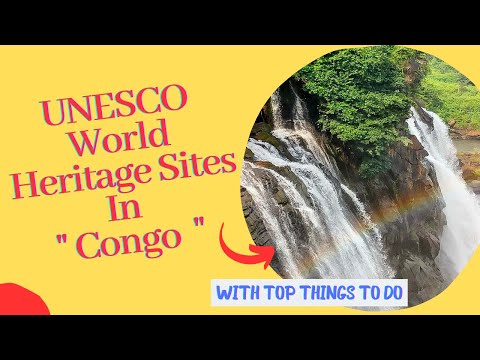
The Republic of Congo, often overshadowed by its larger neighbor, the Democratic Republic of Congo, offers a unique tapestry of cultural and natural heritage that captivates the adventurous traveler. Among its treasures are areas designated as UNESCO World Heritage Sites, remarkable for their biodiversity and cultural significance. These sites not only offer a window into the primal heart of Africa but also highlight the urgent need for conservation in the face of modern threats.
#### 1. **The Okapi Wildlife Reserve**
Located in the northeastern part of the Democratic Republic of Congo, this expansive reserve covers about 13,726 square kilometers. It is named after the elusive okapi, a relative of the giraffe that is indigenous to these dense rainforests. The reserve’s significance extends beyond this rare species; it is a vital refuge for other endangered animals including forest elephants, chimpanzees, and various endemic bird species.
The biodiversity in Okapi Wildlife Reserve is unparalleled partly due to its isolation and varied topography which ranges from swamps to rainforests. Yet it remains under threat due to illegal mining, logging, and poaching. The conservation efforts are ongoing and vital for the survival of many species depending on this ecosystem.
#### 2. **Virunga National Park**
Also located in the Democratic Republic of Congo but touching borders with Uganda and Rwanda, Virunga National Park is one of Africa’s oldest national parks and perhaps one of its most famous UNESCO World Heritage Sites thanks to its dramatic landscapes and diverse wildlife. Established in 1925 as Albert National Park, it was designated a UNESCO World Heritage site in 1979.
Virunga is renowned for its active volcanoes including Mount Nyiragongo and Mount Nyamuragira which are among Africa’s most active volcanoes and add to the unique ecological makeup that supports diverse habitats from lush forests to savannas. The park is particularly famous for being one of the last refuges for mountain gorillas. Visiting Virunga offers a rare glimpse into one of Earth’s most powerful landscapes coupled with the poignant beauty found in its struggle between man’s encroachment and nature’s resilience.
#### 3. **Garamba National Park**
Found within northeastern Congo near South Sudanese border lies another gem named Garamba National Park established in 1938. This park has been a UNESCO site since 1980 because of its large populations of African elephants, giraffes (especially notable are Kordofan giraffes), South Sudanese white rhinoceroses (which unfortunately have now been declared extinct), hippopotami among other species.
It’s a true reflection on how untouched swathes of land can reveal so much about our world’s history while showing us how ecosystems function without human interference when protected properly – although Garamba faces ongoing threats from poaching largely fueled by regional conflicts.
#### Why Visit These Sites?
Visiting these UNESCO World Heritage sites in Congo isn’t just about witnessing stunning natural beauty or encountering rare wildlife; it’s an educational journey about environmental challenges facing our planet today. It offers tourists an intimate look at conservation efforts needed to preserve these places against increasing external pressures such as illegal wildlife trade or habitat destruction due to mining activities.
